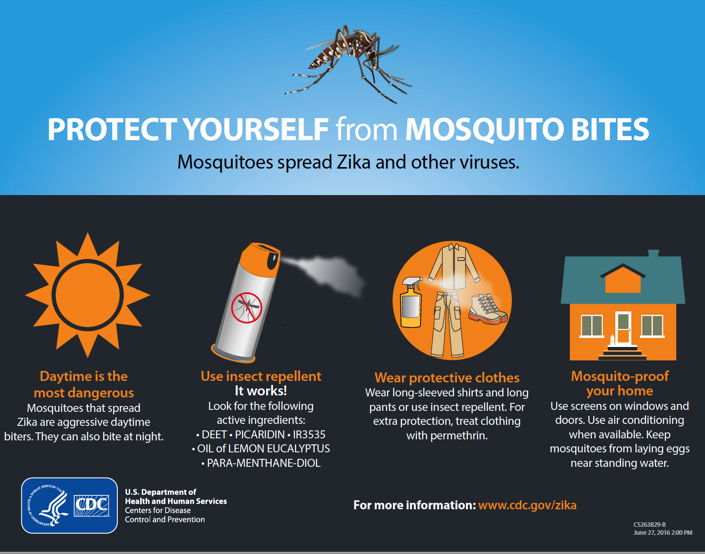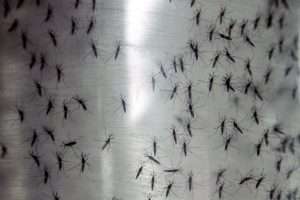Where is the science of Zika virus control?

Zika virus infection is a devastating disease for its association with neurological disorders (Guillain-Barré syndrome and microcephaly). For the last few months Zika virus has spread at a rapid pace over the continent of South America and has now reached the US and Asia (Taiwan and Singapore). The World Health Organization declared Zika a public emergency and special funds from Brazil, Singapore and the US (after months of political battle in the US congress) have been committed to combat the infection and to contain the outbreak.
Despite this strong effort to eradicate Zika virus infection there is still no available cure against the virus and a vaccine has a long way to go before being widely implemented. Meanwhile, we have learnt a lot about this virus.
Importantly we know now that the virus transmits only to few mosquito species, such as Aedes aegypti and Aedes albopticus or eventually Aedes polynesiensis.
We also know there is, to date, no evidence of a transmission of Zika through Culex or other endemic species in the US or elsewhere.
These two factors certainly restrict the reservoir available to the virus and could better facilitate control of transmission through the currently available remedies of insecticide spraying and preventing contact with the vector. However, given their limitations, discussed next, we must also assess newer, experimental methods for eradicating and controlling Zika, including the release of GMO mosquitoes, the CRISPR/Cas9 gene drive, and Wolbachia infection.
Insecticide sprays only work temporarily and are largely ineffective
The immediate response to this Zika virus outbreak adopted by authorities in Florida, Puerto Rico, Taiwan and Singapore has consisted of a combination of aerial sprays of the organophosphate insecticide Naled and/or ground sprays the larvicide Bacillus Thuringiensis israelensis or biti. As a result, a reduction in Aedes aegypti prevalence in Miami Beach after a month of intense aerial and ground sprays was observed according to the CDC in late September 2016.
However, a rebound in the Aedes aegypti prevalence has been recently observed following the insecticide spray campaign at Miami Beach according to an October 3, 2016 CIDRAP report.
Aedes aegypti is an indoor mosquito resident and it is highly challenging to eradicate since the larvae have the ability to survive for months in standing water in every possible indoor or outdoor surface (plastic bottles, tree holes….) as long as the water is available. To eradicate the larvae and mosquitoes, it would require absolute control of the indoor and outdoor sites and eliminate all standing water.
Past experience with the malaria vector Anopheles has demonstrated that an aerial spray is largely ineffective for indoor mosquitoes and indoor sprays are effective but expensive, and required to be conducted on a large scale, at regular intervals and importantly with the full commitment of the communities.

Is the release of GMO mosquitoes a solution to control the outbreak?
The control of vectors using genetically modified insects has been the focus of many researchers and entomologists since the 1950s. Several strategies have been tested to control the transmission of mosquito borne diseases, including:
- Sterile insect techniques (SIT) using irradiated sterilized mosquitoes.
- Engineered (GM) mosquitoes carrying a dominant lethal mutation (RIDL) affecting the offspring at pup stage to larval development.
For Zika virus infection, the FDA has approved field trials by Oxitec (a Oxford based company) using the RIDL strain OX513A Aedes aegypti—to be performed in the small community of Haven in the Florida Keys. Florida remains the only state in the US with locally-acquired cases of Zika, making the need for Zika control measures particularly acute. The Center for Disease Control (CDC) reports that, as of October 12 2016, there has been 128 locally acquired Zika cases on record, and experts predict the aftermath of Hurricane Matthew may lead to greater risk of a homegrown Zika outbreak in Florida.
Despite the threat of Zika in Florida and approval from the FDA to begin a trial using GM mosquitoes, no such trial has yet taken place due to growing public resistance, culminating in a petition to stop the trial based on fears about the potential impact of the GM mosquitoes on the local people and environment. Before proceeding with any trial, Florida officials have placed a non-binding voter referendum on the affected county's November 8 election ballot.
What is known about GM mosquito effectiveness and environmental impact?
From previously published field trials on Dengue virus infection using OX513A, we now have an idea of the effectiveness of this strategy on the mosquito prevalence and its epidemiological impact. Several field trials were conducted in Brazil or in Malaysia using sustained release of OX513A over a year to control or suppress Aedes aegypti population. The results of these trials were very encouraging leading to up to 90% suppression of Aedes mosquitoes and demonstrated that mosquito prevalence could be controlled for over a year. No safety concerns, environmental effects or the emergence of resistant mosquitoes were reported during or after these trials.
Despite these encouraging results, it is still too early to come to a conclusion about the longer term efficacy of this strategy. It would certainly require several years of field trials before envisaging a large-scale implementation.
Meanwhile, the outcome of a showdown between community opposition and the Florida Keys Mosquito Control Board—which is charged with determining whether the available science is sufficient to safely proceed with a local trial—will be known at some point after November 8th.
Is there any future for a CRISPR/Cas9 gene drive strategy as an alternative to insecticide sprays or the release of GMO mosquitoes to eradicate Zika virus?

Gene drive strategy using CRISPR/Cas9 genome editing technology has sparked much interest in the scientific community and the general public, to a point where it has been widely hyped as a solution for the eradication of mosquito-borne diseases such as Zika and malaria. While the hype and the excitement are tangible, there are also many fears over the use of CRISPR/Cas9 genome editing technology to control mosquito-borne infection.
Meiotic drive, simplistically described as a natural process that favors the over-representation of an allele in a gamete during meiosis (e.g. could be a transposable element in the genome) which occurs commonly in Drosophila or in mosquitoes such as Aedes aegypti or the malaria vector Anopheles, is seen as a powerful, potential mechanism for natural population replacement. Recently, researchers took advantage of meiotic drive and combined this with CRISPR/Cas9 genome editing technology to accelerate the population replacement of the gene of interest to disrupt genes required for fertility or transmission of the pathogens. The experiments in a laboratory setting have worked remarkably well, with a high success of up to 99% in generating infertile mosquitoes in the laboratory population, raising many hopes of the eradication of wild mosquito populations.
However, some major limitations to this approach have become apparent to researchers in just the last few months. In the field, the mosquito population displays considerable genetic variation. As such, targeting a gene with a CRISPR/Cas9 gene drive approach might have a very limited effect, or be immune, as the genetic variation in the population at the Cas9 target site could considerably affect the efficiency of the drive.
One solution to avoid this limited effect could be the introduction of a second drive. Recent studies have shown that resistance to gene drive occurs fairly rapidly in natural populations and would definitively impede the efficiency of the drive. Thirdly, the Cas9 enzyme creates a double stranded break in an error prone repair pathway leading to indels and off targets effects that are not negligible. Finally besides environmental and ethical concerns such as the lack of biocontainement and escape from edited mosquitoes leading to a 'chain reaction' in wild population or eventually the development of the gene drive technology as a bio-weapon, there is no remedy to date on how to stop the chain reaction generated from gene drive.
Given these issues, I would predict a very limited effect of this strategy to the control and the eradication of mosquitoes-borne diseases.
Wolbachia: a potential alternative to GMO mosquitoes to contain Zika outbreak?
The endosymbiotic bacteria, which could be simply defined as a bacteria living within the body of another living organism, Wolbachia pipentis, is an intracellular bacteria which infects the Aedes or Anopheles host and has been shown to reduce or block the transmission of Zika infection. Wolbachia is present and specific in many insect species and has been shown to be safe for the environment, as the bacterium doesn't transmit to animals or humans. Field trials performed in Australia and Vietnam for Dengue virus showed great success but also a lack of persistence in the establishment of the infection into wild populations of Aedes. Further field trials on Zika and other viruses will determine the sustainability of this strategy and will certainly be very interesting to follow.
How to efficiently control this Zika virus outbreak?
To control this Zika outbreak, sadly there are not many immediate options available. The use of GMO, CRISPR/Cas9 or Wolbachia infected mosquitoes are still at the developmental stage and would require years of field trials before attempting a larger scale release.
The Zika vaccine is still under development and again, will require years of clinical trial before its implementation.
Barring the use of GM mosquitoes in Florida, the only option currently available to contain this outbreak and combat Zika virus infection remains the application of indoor and outdoor sprays, along with the implementation of preventive measures delineated by the CDC.
This story is republished courtesy of PLOS Blogs: blogs.plos.org.

















